The Aircraft Spotlight feature looks at an airplane type and evaluates it across six areas of particular interest to flying clubs and their members: Operating Costs, Maintenance, Insurability, Training, Cross-Country, and Fun Factor.
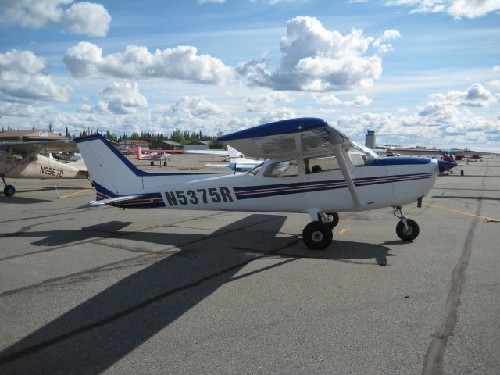
The original purpose of the Aircraft Spotlight was to highlight the many different types of planes that flying clubs are operating, other than the ubiquitous Piper Cherokee or Cessna 172 or 182. Over the years we’ve made an exception or two, but we’ve rarely strayed from that guiding philosophy. Until this month.
The Arctic Flying Club based in Fairbanks, Alaska (see this month's Club Spotlight) has a 1974 Cessna 172M. But it’s not your standard 172.
Club Maintenance Officer Dave Stotter shares some of the differences that make the Arctic Flying Club’s 172 better suited for Alaskan operations: “We’ve got the 180-hp upgrade. We’ve got the larger main tires and larger nose gear and we’ve got the long-range tanks.” All of which makes this 172 well suited for backcountry flying.
Operating Costs
The Cessna 172 Skyhawk debuted in 1956 and is the most produced aircraft in history with more than 44,000 made. It originally featured a 145-hp Continental O-300 engine and a fixed-pitch prop, which was eventually upgraded to a 150-hp Lycoming O-320 and then a 160-hp version.
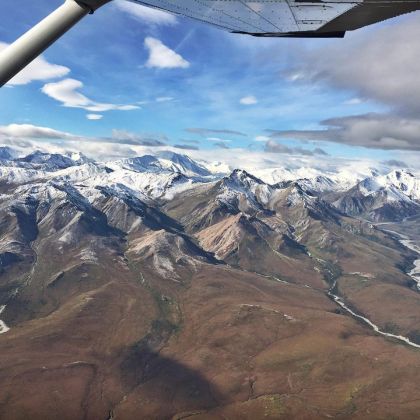 The Arctic Flying Club’s 172M has the Penn Yan Aero
conversion that boosts the stock 150-hp Lycoming O-320 to “a certified 180-hp
O-360-A4M engine,” according to the Penn Yan website. The added horsepower
improves takeoff performance over a 172 with a smaller engine—an important
factor when operating on unimproved air strips, some of which may be surrounded
by high terrain.
The Arctic Flying Club’s 172M has the Penn Yan Aero
conversion that boosts the stock 150-hp Lycoming O-320 to “a certified 180-hp
O-360-A4M engine,” according to the Penn Yan website. The added horsepower
improves takeoff performance over a 172 with a smaller engine—an important
factor when operating on unimproved air strips, some of which may be surrounded
by high terrain.
It also makes the plane more realistic, Dave said. “A standard, stock 172, they say is a four-place airplane but it’s pretty marginal. If you have full fuel and four normal sized people in a stock 172, you’re probably pretty close to your [weight] limit.” The more powerful engine provides a “substantial” weight increase, Dave said.
According to Penn Yan, test results on the 180-hp conversion “showed an increased cruise speed to 151 mph; a decreased takeoff distance to 400 feet (700 feet with a gross weight of 2,400 lbs.); an increased rate of climb to 1,020 feet with gross weight at 2,400 lbs.; a ceiling of 19,500 feet; and a gross weight capacity increase up to 2,550 lbs.”
The Arctic Flying Club charges $106 an hour, tach time wet, for its 172. For flight planning, the club recommends estimating a fuel burn of about 10 gph, but Dave said, “I have never burned 10 gph, it’s usually much closer to 9 gph. But for safety, 10 gph is a nice easy round number.”
An online search for a 172 with a 180-hp conversion found the purchase price ranging from $70,000 for a 1969 model to $85,000 for a 1985 model with similar total time. Prices may vary depending on total time and avionics.
Maintenance
Maintenance isn’t a problem because it’s a 172. Mechanics are familiar with the type and parts are plentiful. However, flying to airports with gravel or dirt strips, which is common in Alaska, presents a few potential maintenance issues.
The first is chipped propellers and the second is dinged and dented tail surfaces. To minimize these possible problems, the club put larger main tires on the plane as well as heavy-duty nose gear. Most 172s have 6.0” tires, but the Arctic Flying Club plane has 8.50s on the mains. The larger tires and heavy-duty nose gear increase the prop clearance and provide additional shock absorption.
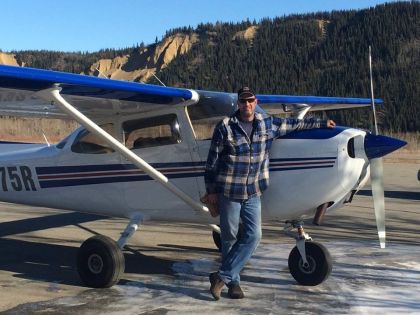 Even with the beefed up gear, “we had chips in the propeller
fairly regularly that I was having to get filed out,” Dave said. “But we’ve
been doing really well the last couple years, we haven’t had much issue.”
Even with the beefed up gear, “we had chips in the propeller
fairly regularly that I was having to get filed out,” Dave said. “But we’ve
been doing really well the last couple years, we haven’t had much issue.”
One way to minimize the chips and dings is to have good soft field landing technique. “Keep the nose up as much as you can, land on the mains and lower down gently,” Dave said. “The bigger thing we don’t want you to do is any stationary run ups on the gravel. You can do it when you’re taxiing, but even then, nice slow acceleration of power. Don’t just slam it up.”
The club also encourages members not to fly to “a field so short that you have to hold the brakes and ramp up the power before you go because that’s going to ding things,” Dave said. “There will be rocks flying all over the place.”
To protect the tail, they put some protective material on the leading edges. There have been little dings and some chipped paint, but “nothing drastic,” Dave said.
Insurability
Getting insurance hasn’t been a problem for the club. Dave thought insurance is about $6,000 a year, for hull and liability coverage. Although it sounds high, landing on unimproved runways, the lack of safe emergency landing sites, and the rugged terrain, may all contribute to higher rates in Alaska.
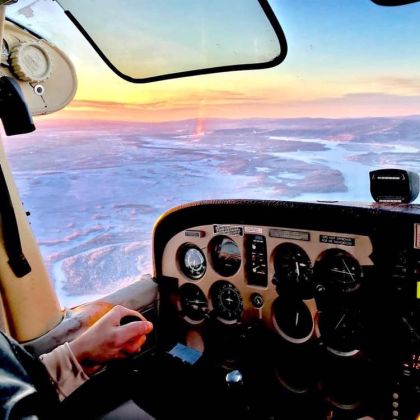
Training
The 172 is a simple plane to fly and has been used for decades as a trainer. The Arctic Flying Club does allow members to earn their private pilots certificate using the plane, but they limit the number of student pilots in the club to five members at a time.
The aircraft doesn’t have a fancy panel, Dave said, but it is IFR certified and can be used for IFR training. The club has had a few members that have done so, but not many. “I think the majority of our members are more recreational. Part of the fun of flying is seeing where you’re going,” Dave said. “They’re not Point A to Point B get there in the clouds. We do have a few that are IFR certified but the majority of us are not.”
Cross-Country Travel
The plane has long-range tanks that increase the fuel capacity from 42 gallons to 52 gallons, of which 48 gallons are usable. While this does provide more range, the primary purpose is to ensure they have enough fuel because many airports in Alaska don’t have avgas. “The fact that you can’t get fuel everywhere, with the 180-hp engine you can carry more load, so can carry some gas with you,” Dave said.
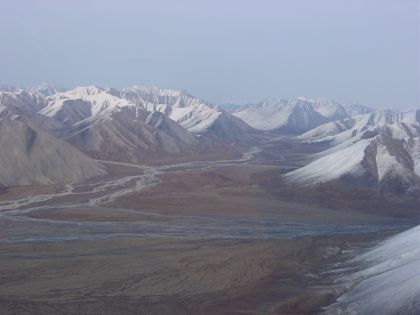
In addition to the added fuel capacity, having the 180-hp engine provides a greater useful load. This allows members to fly with full fuel and carry camping gear or whatever else they want to haul.
Fun Factor
“It’s not an aerobatic airplane, if that’s your idea of fun. But in terms of taking friends out or seeing stuff, it’s great fun for that,” Dave said. As you can imagine, flying in Alaska provides incredible landscapes and scenery.
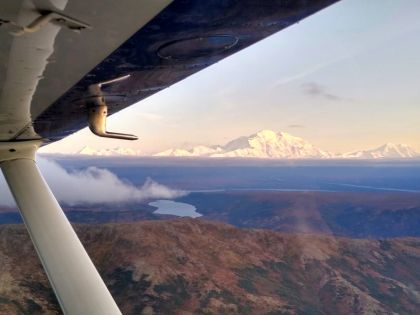 “It is great. You take off from Fairbanks and within minutes
you’re out in the wilderness,” Dave said. “Flying along, there are mountains
not that far to the south. There are rivers, lakes, all kinds of stuff to look
at. If it’s a nice clear day, when you take off on Runway 20 you’re heading south.
As soon as you get up over the trees, Denali [Mt. McKinley] is booming off in
the distance. You could fly off that way and see the big mountain, that’s
pretty cool. When I have friends up and we go places, there’s a big gold mine
out here that we fly over and then we go over the White Mountains and down over
Minto flats and do a big loop.”
“It is great. You take off from Fairbanks and within minutes
you’re out in the wilderness,” Dave said. “Flying along, there are mountains
not that far to the south. There are rivers, lakes, all kinds of stuff to look
at. If it’s a nice clear day, when you take off on Runway 20 you’re heading south.
As soon as you get up over the trees, Denali [Mt. McKinley] is booming off in
the distance. You could fly off that way and see the big mountain, that’s
pretty cool. When I have friends up and we go places, there’s a big gold mine
out here that we fly over and then we go over the White Mountains and down over
Minto flats and do a big loop.”
Dave also said being able to put four people in the plane, particularly when his kids were little, was fun. They would go sight seeing or perhaps load some camping gear for an overnight or weekend trip—something that would be difficult in a standard 172.
Overall
The Cessna 172 is affordable, easy to fly, and easy to maintain—which is why so many have been made and are still flying. For clubs operating in areas with a number of unimproved airports, beefing up this proven design with a more powerful engine, long-range tanks, larger tires and bigger nose wheel gear, like the Arctic Flying Club has done with its 172, turns a common aircraft into a real performer well suited to backcountry flying.